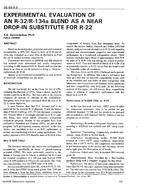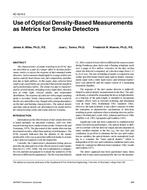Nonresidential fenestration systems have different characteristics from residential products and therefore require different treatment. A component modeling methodology has been developed and is presented in this paper to specifically address nonresidential fenestration products, from punched openings to site-built and assembled products. The basic premise of this methodology is that the manufacturer of each fenestration component (i.e., framing, glazing, and spacer manufacturer) is responsible for its own product, for which the performance is published in NFRC-certified product directory (CPD), while the overall performance of the fenestration system is determined using functions developed from a number of actual runs with real glazing and spacer systems. The methodology is based on four generic runs, incorporating the high and low end of performance (i.e., best/worst or B/W options). This methodology can be implemented in a software tool, which would pull component information from the CPD into its own database and would calculate thermal and solar-optical performance at the standard size as well as the actual product size. This way, not only responsibility for component performance is clearly defined, but also the input data about fenestration systems for building energy simulation is accurate and will lead to more precise prediction of peak loads and annual energy use. Implementation of this methodology within a nationally recognized rating program will allow for uniform and accurate representation of nonresidential fenestration systems, for both site-built and punched opening type of fenestration products, while still providing data for a prescriptive path in energy codes (e.g., performance at standard NFRC size).
Citation: Thermal Performance of Exterior Envelopes of Whole Buildings IX
Product Details
- Published:
- 2004
- Number of Pages:
- 13
- File Size:
- 1 file , 4.1 MB
- Product Code(s):
- D-BldgsIX193


